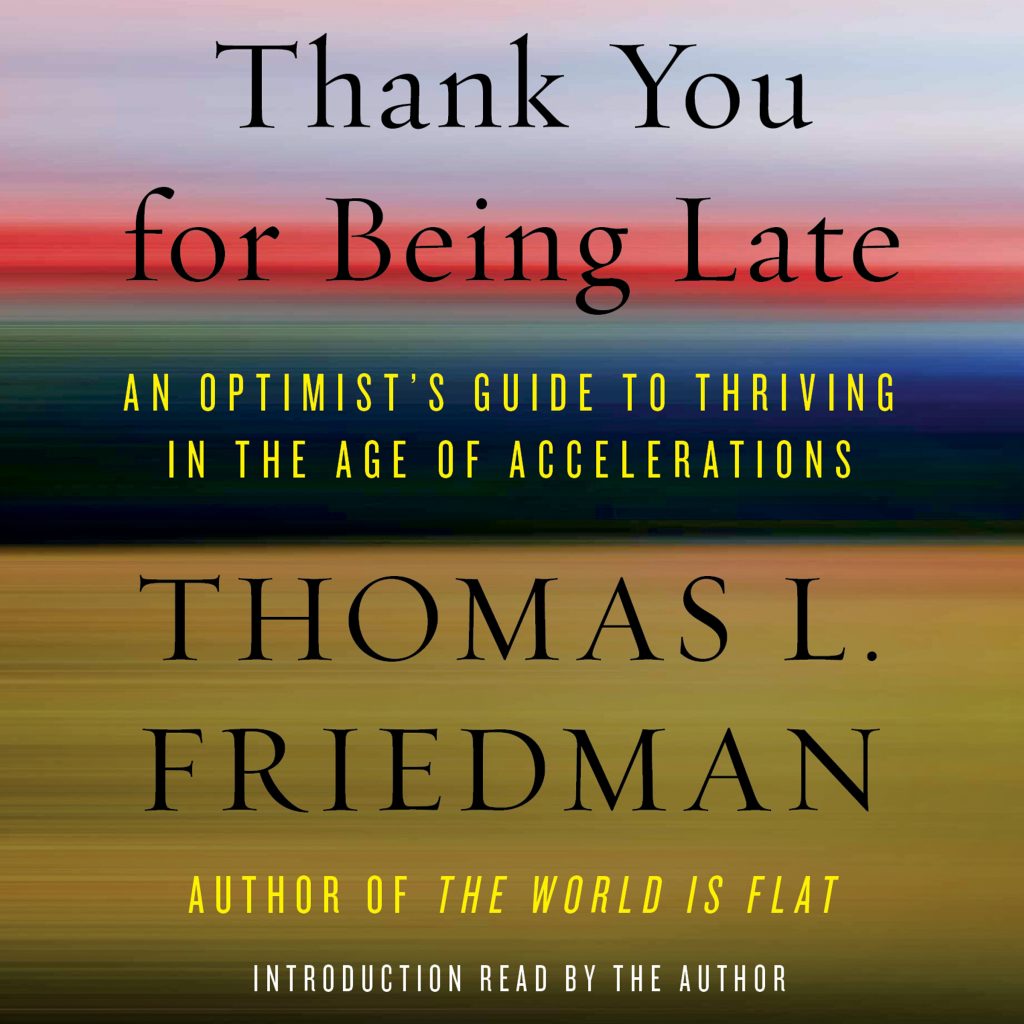
I’m preparing a course for this Fall on the future, and pursuing a number of related books that will no doubt result in future Technology and Society blog posts. One recent (2016) book is Tom Friedman’s “Thank You for Being Late.. I’m only part way in, but clearly technology impact considerations are top on Friedman’s list. His prior bestseller, “The World is Flat,” pointed out how technology had changed the shape of the world. Since that book was published (2005), the world has changed, significantly. The future is arriving more quickly than he anticipated. Like some other authors, he sees this window of time, in particular from 2007 onward, as a “dislocation” not just a “disruption.” The short take on this is that a disruption just destroys your business (think PC’s and mini computers, cell phones and land lines, cars and horses). A disruption wipes some folks out, but the world keeps puttering along.
Dislocation on the other hand makes EVERYONE sense that they are no longer able to keep up. He suggests the last such disruption was the advent of the printing press and subsequent reformation (taking decades to play out, and only affecting the Western world.) Today’s dislocation is global, affecting almost every activity, and requires our serious attention and consideration.
The title Thank You for Being Late results from some of Friedman’s contacts showing up late for breakfast, and his realizing that it gave him a few essential minutes to reflect on the deluge of changes and data he had been assimilating for the last few years. A break he suggests we all need.
While there will be a few more posts based on this book, I will point out a few essential factors that have surfaced so far:
- Computing has gone past a tipping point. Individual and networked power tasks that were unimaginable even a decade ago (2007) are propagating now.
- Communications capacity has exploded (AT&T asserting 100,000 times as much traffic as their pre-iPhone exclusive in 2007 — note that year)
- The Cloud and Big Data — we can now store everything (and we are), with tools (Hadroop being the leading example) that facilitate analyzing unimaginable amounts of content. These developments are also since 2007.
(IEEE has a focused community on cloud computing.) - Access has gone global, as has collaboration and many other aspects of life.
- Sensors are everywhere — the “Internet of Things” has arrived, but more than that, “the machine” as he calls it, has ears, eyes, touch — and eventually taste and smell — almost everywhere, including every cell phone, etc.
(IEEE has a focused community on the Internet of Things.)
All of the pieces of the equation are advancing at accelerating rates in an event Friedman calls the “SuperNova.”
One key is that the pace of technological change has surpassed our ability to adapt to the changes. A decade ago, we might have considered this a generational issue (us old folks unable to keep up with the younger ones– “if you need help with your PC ask your grandchild”). Today this challenge is penetrating every demographic. It’s not that the world just isn’t flat anymore, it’s that we can no longer grasp sufficient information to identify what shape it is this year, and that next year it will be different.
What factors are changing the shape of your world?






 JOIN SSIT
JOIN SSIT